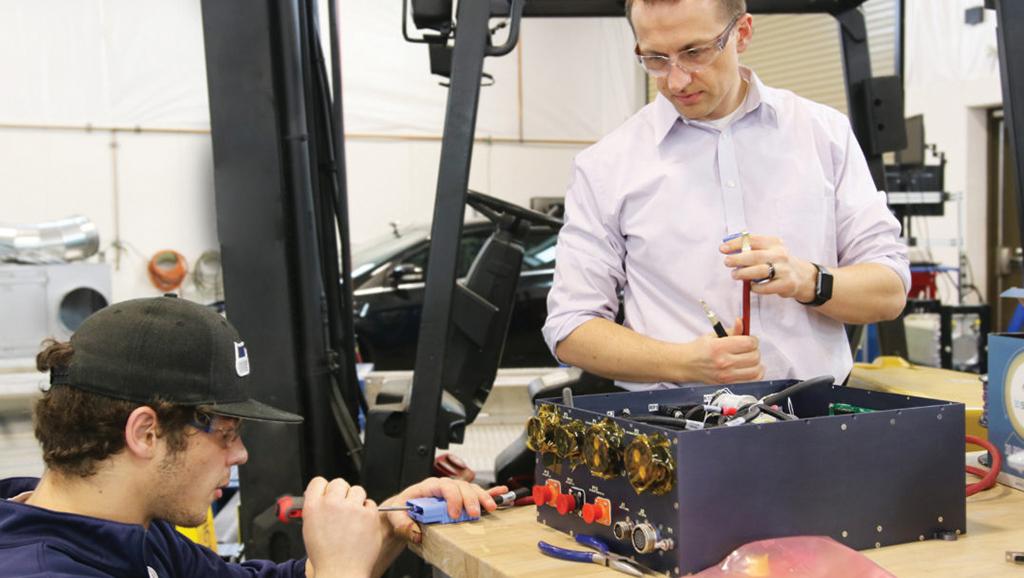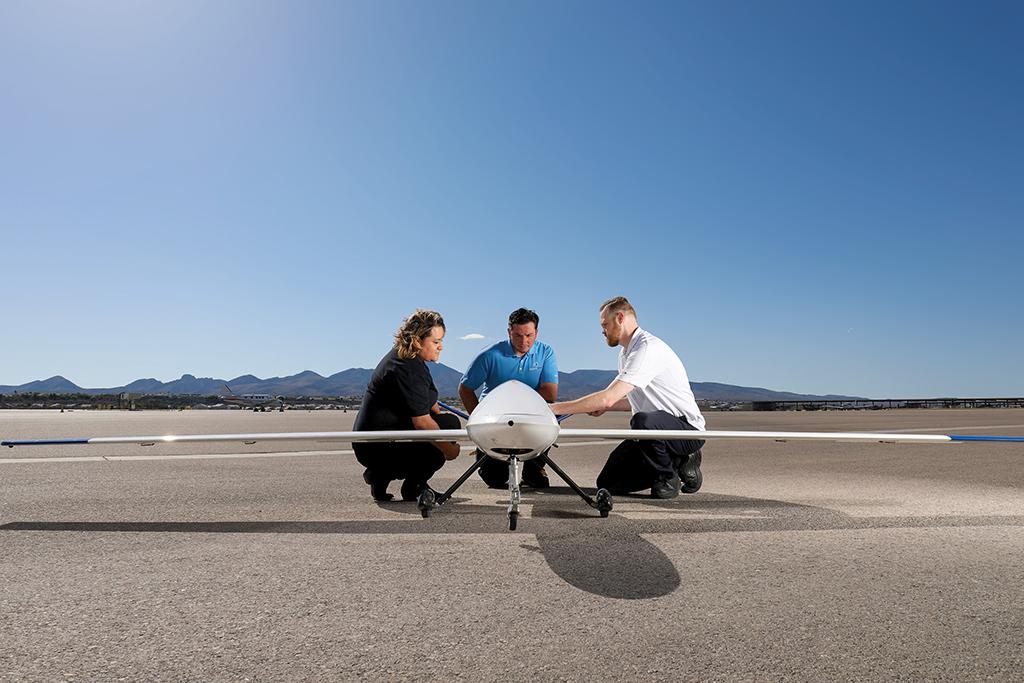
Advanced air mobility (AAM) and emerging aviation technologies will come with a host of new maintainability challenges, so aviation maintenance technicians (AMT) will need to upgrade their skills to prepare. However, the industry will need to overcome outdated curriculum standards that are just now being addressed with the recent passing of the Consolidated Appropriations Act in December. It directs the FAA to remove and replace the outdated Part 147 educational requirements with community-drafted language. The FAA is working on this, and the final rule is expected soon.
“[That final rule] creates a lot of avenues for educational providers to not be stuck in this 50-year-old regulation on how they teach people and really use modern technologies and out-of-the-box kind of educational processes and pedagogy to develop programs to meet the industry,” says Ryan Goertzen, vice president of workforce development at AAR. “I see some real value and real change, especially with the new Airmen’s Certification Standards also coming out that are going to allow schools to be more aligned with the needs of the industry.”
As AMT schools wait for the new standards to take effect, the Aviation Technician Education Council (ATEC) held a panel discussion with stakeholders to talk about how emerging technologies will affect required technician skill sets and ways in which educators can best prepare.
“Our AMT mechanics to this point, they’re very mechanically minded and very hands-on. That has served us really well in the past, but we’ve got to get some of that abstract thought into there as we deal deeper into electricity, computer networking and how computers work,” says Zackary Nicklin, unmanned aerial systems program manager at Northland Community & Technical College in Minnesota. Nicklin points out that the FAA’s Advisory Circular Overview of the Aviation Maintenance Profession does not even mention the word “computer,” despite most modern airframes being reliant on computer-based systems.
Antone Andrews, manager of maintenance training at General Atomics Aeronautical Systems, notes that computer-based systems require a different skill set than the historical focus on wrench-turning of most AMT curricula. “With a software-centric approach, we’re seeing new issues out in the field. New technology gives us new methods of failing,” he says.
“Software engineers may not realize that altitude needs to go negative when you’re taking off at an airport in Death Valley. Our technicians need to have the awareness to know that when altitude bottoms to zero and won’t go any lower, it doesn’t require a hardware change,” explains Andrews. “Little things like that can really cause a lot of problems. We have to train our folks to identify these issues and figure out how to get around them, and to provide information to the engineers when needed.”
In addition to computer-based systems, the battery systems in AAM aircraft introduce a new set of complications compared to those used in aircraft with combustion engines. Nathan Millecam, CEO and co-founder of Electric Power Systems, notes that AMTs will need to think differently about how battery technology relates to aircraft performance.
“What we’re used to with a combustion engine is degraded engine performance based off of how hot it is outside or how high we are, and we’ve trained ourselves around that. When we start to see that degraded performance, we take action against it,” says Millecam. “What’s fundamentally different about both all-electric and hybrid-electric is your key power requirements are paced by the battery. Your battery is getting degraded from the moment it’s born and it also has degraded performance, depending on how much you ask of it from a power perspective. As that starts to degrade and change, it becomes a question of, ‘When is maintenance required?’”

According to Paul McDuffee, operations analyst of Hyundai Motor Group’s Urban Air Mobility Division, the business model for electric vertical-takeoff-and-landing vehicles (eVTOL) will require having many vehicles flying simultaneously with minimal ground time, which will put additional demands on batteries. “The expectation is either we are in a sustained battery-swapping mode or a rapid-charge mode for the battery. All of those things are fairly onerous when it comes to maintaining the operation tempo that we’re going to need to actually close the business case for AAM,” McDuffee says.
Millecam stresses that battery swaps themselves can be complicated and dangerous, so teaching high-voltage safety will be critical in training AMTs for maintenance of AAM aircraft. He notes that these aircraft will be flying with much higher voltage systems, so batteries may need to be swapped out as frequently as once a year. Incorrect battery system installations, he says, could cause arc flashes that could kill a technician or start a fire.
“That poses a whole set of unique challenges in teaching the technician about how to think about safety,” says Millecam. “We’re used to thinking about fuel tanks, firewalls and things like that. When we go electric, insulative barriers are the new firewalls, and we have to think about that in terms of how we’re installing things, how we’re looking at our wiring harnesses and what access people have at what times to those certain components during the maintenance intervals.”
In addition to a focus on electric power-generation technologies, the ATEC panelists noted advanced avionics, composite structures and repairs, and troubleshooting as focus areas for AMT schools preparing students for AAM aircraft. However, the sheer number of unique airframes and systems being designed within the AAM space may make this preparation easier said than done.
“Some of these systems are so proprietary that it’s going to be too much of an ask to say that any specific A&P school or avionics program is going to meet the needs of any one particular employer,” says Andrews. “I think what we have to try to do is imbue on the student themselves the idea that wherever they go, they’re going to have to drive their learning and embrace the opportunities that are provided to them.”
Nicklin notes that it will be important for schools to focus on foundational knowledge that students can apply to new types of equipment and to transition toward teaching students the “why” of various maintenance processes rather than just the “what” found in maintenance manuals.
“Regardless of what the technology is, a big hurdle we’re going to have is bringing this technology into the classroom,” says Nicklin. “New technology tends to be very expensive, and having the budget to go out and buy some of these new electric-propulsion and hydrogen systems that we can then use to train our workforce is going to be difficult. We’re going to have to rely really hard on industry partnerships to bring this technology into the classrooms.”
McDuffee says Hyundai—which is designing both an all-electric passenger vehicle and a hybrid-electric unmanned cargo aircraft—is open to working with AMT schools to help prepare the next generation of technicians to work on its new AAM products. He encourages schools to reach out to OEMs as soon as possible to start discussions about partnerships.





